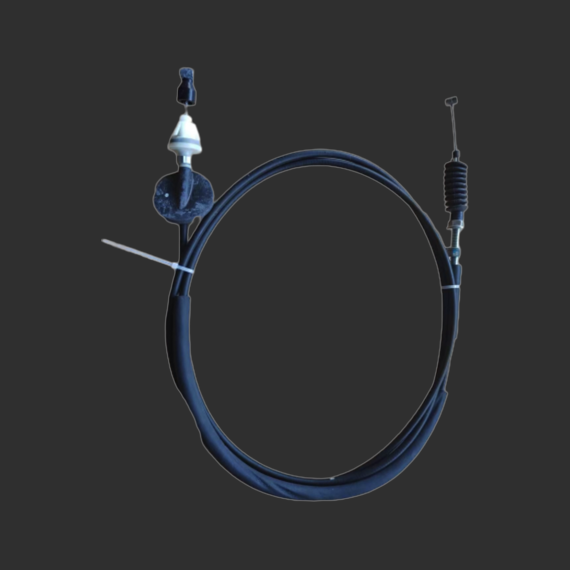Throttle Cable Management for Enhanced Vehicle Performance and Reliability
Understanding Throttle Cable Control A Key Component of Engine Performance
Throttle cable control is an essential component in the functioning of many vehicles, ranging from cars to motorcycles and even boats. It plays a critical role in regulating engine power and performance, thereby directly influencing the driving experience. In this article, we will explore the importance, operation, and maintenance of throttle cable control systems.
What is Throttle Cable Control?
The throttle cable is a mechanical linkage that connects the accelerator pedal to the throttle body of an engine. When the driver presses the accelerator pedal, the cable pulls on the throttle valve, allowing more air and fuel to enter the engine. This process increases engine power and speed. In modern vehicles, throttle control can also be electronic, where an electronic control unit (ECU) manages the throttle position based on various inputs from sensors.
Importance of Throttle Cable Control
Throttle cable control is crucial for several reasons
1. Engine Response The throttle cable directly affects how quickly an engine responds to the driver's inputs. A properly functioning throttle cable ensures smooth acceleration and braking, enhancing the driver's control and comfort.
2. Fuel Efficiency An efficient throttle cable system contributes to proper fuel-air mixture and combustion. This efficiency not only improves engine performance but also optimizes fuel consumption, which is essential for cost savings and environmental reasons.
3. Safety A malfunctioning throttle cable can lead to dangerous situations, such as unintended acceleration or a lack of power during critical moments. Therefore, regular inspections and maintenance are vital to ensure the system's reliability.
How Throttle Cable Control Works
The throttle cable operates through a simple yet effective mechanism. When the driver presses the accelerator pedal, the motion is transferred via the cable to the throttle body, which is usually located on the intake manifold. The throttle body consists of a butterfly valve that opens and closes to regulate airflow into the engine.
The cable typically consists of a flexible wire housed within a sheath. This design allows for smooth movement and minimal resistance. Once the throttle is opened, the engine management system measures the airflow and adjusts fuel delivery accordingly, ensuring optimal performance.
throttle cable control

Different Types of Throttle Control
1. Mechanical Throttle Control Traditionally, the throttle was operated mechanically through a cable, offering straightforward interaction between the accelerator pedal and the throttle body. This type of system relies heavily on the physical components and may require periodic adjustments.
2. Electronic Throttle Control (ETC) More modern vehicles feature electronic throttle control, which eliminates the physical cable in favor of electronic sensors and actuators. This system allows for more precise adjustments to the throttle position, improving engine response, fuel efficiency, and integration with advanced safety systems.
3. Drive-by-Wire Systems A subset of electronic throttle control, drive-by-wire systems completely replace the throttle cable with electronic signals. This technology allows for advanced functionalities such as adaptive cruise control, traction control, and integrated driving modes.
Maintenance Tips for Throttle Cable Control
To ensure your throttle cable control system operates effectively, consider the following maintenance tips
- Regular Inspections Check the throttle cable for signs of wear, fraying, or corrosion. If you notice any damage, it’s important to replace the cable promptly to avoid further issues. - Lubrication A well-lubricated throttle cable can reduce friction, ensuring smoother operation. Use appropriate lubricants designed for automotive cables.
- Adjustment Ensure that the throttle cable has the correct tension. If it’s too loose or too tight, it could lead to poor engine performance or unresponsiveness.
- Clean Connections Keep the throttle body and cable connections clean from dirt and debris. A clean system can enhance throttle response and prevent malfunctions.
Conclusion
Throttle cable control is a fundamental aspect of engine performance and overall vehicle functionality. Whether mechanical or electronic, this system plays a pivotal role in ensuring a responsive and safe driving experience. Regular maintenance and understanding of how this system works will help vehicle owners maximize their engine's potential and maintain optimal performance on the road.
-
Workings of Clutch Pipe and Hose SystemsNewsJun.04,2025
-
The Inner Workings of Hand Brake Cable SystemsNewsJun.04,2025
-
The Secrets of Throttle and Accelerator CablesNewsJun.04,2025
-
The Hidden Lifeline of Your Transmission Gear Shift CablesNewsJun.04,2025
-
Demystifying Gear Cables and Shift LinkagesNewsJun.04,2025
-
Decoding Clutch Line Systems A Comprehensive GuideNewsJun.04,2025
